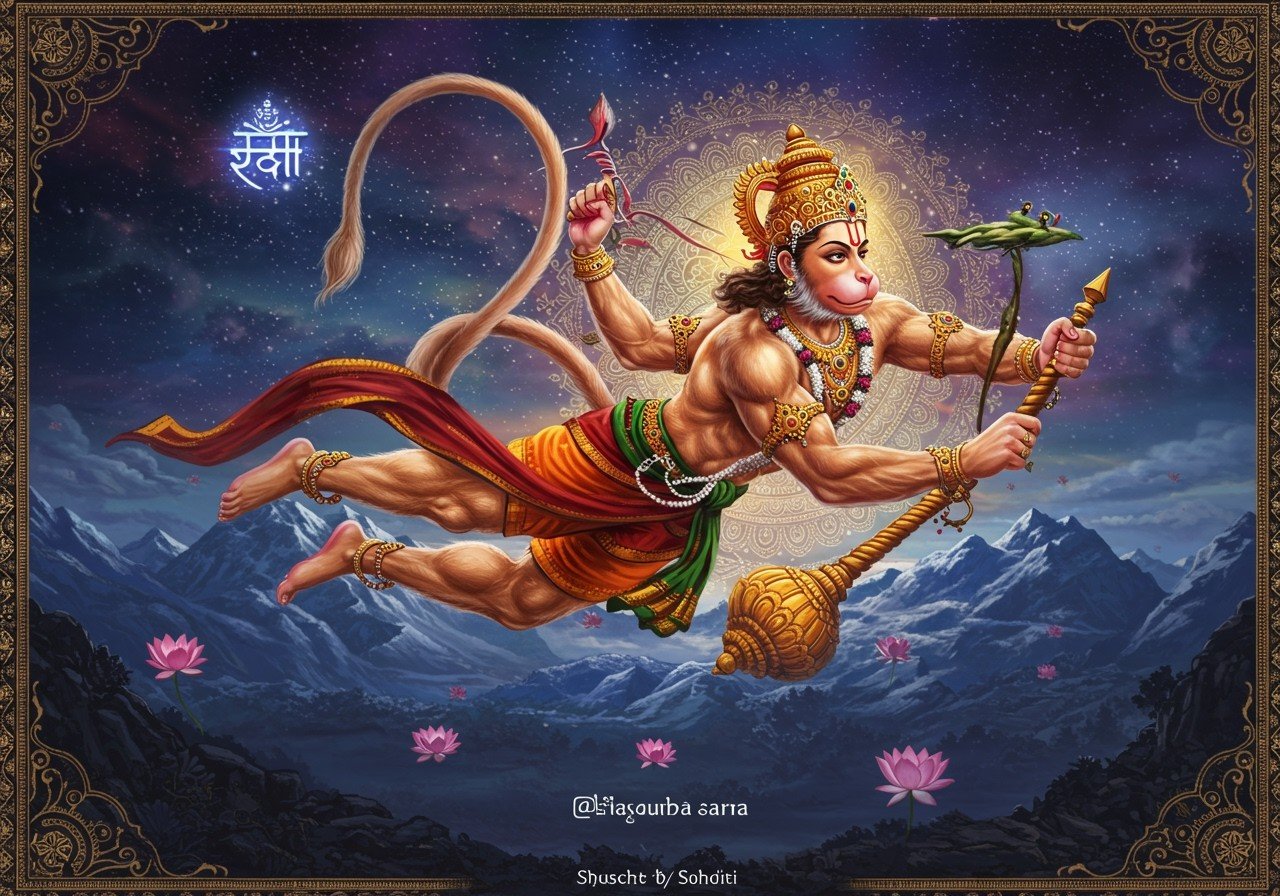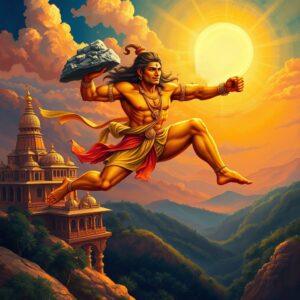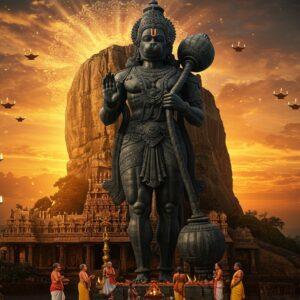
In Hindu mythology, Hanuman, the revered monkey god, embodies strength, devotion, and unwavering loyalty to Lord Rama. His epic tale in the Ramayana inspires countless devotees. His unique physical characteristics, especially his tail, hold deep symbolic meaning and cultural significance. Understanding these attributes allows us to appreciate Hanuman’s enduring presence in Indian spirituality and tradition.
The Symbolism of Hanuman’s Tail
Hanuman’s tail is much more than just a physical appendage; it’s a potent symbol laden with meaning. It represents his incredible strength, agility, and vital role as a protector and divine warrior. In the epic Ramayana, Hanuman’s tail plays a pivotal role. He famously sets Lanka ablaze with it, a testament to his might and unflinching courage. His tail symbolizes not just physical prowess but also the extension of his divine energy and power. Paradoxically, despite its size and strength, the tail also represents humility. Hanuman remains a humble servant of Lord Rama, showcasing his selfless devotion. Furthermore, the tail signifies spiritual elevation, reaching towards higher consciousness and a deeper connection with the divine.
The Meaning of Hanuman’s Tail
- Symbol of Strength and Power: Hanuman’s tail embodies his immense strength and divine energy. It played a crucial role in the Ramayana, acting as a weapon of divine power and assisting him in incredible feats. The burning of Lanka showcases the destructive potential that resides within this seemingly simple appendage.
- Self-Control and Discipline: The curled nature of Hanuman’s tail represents his exceptional self-control over his immense power. He wields his strength judiciously, using it for righteous purposes and the benefit of others, demonstrating his calm and disciplined nature. This symbolizes the importance of controlling one’s impulses and channeling energy for good.
- Protection and Blessings: Hanuman’s tail is considered a protective symbol, signifying his watchful presence over his devotees. It is believed to ward off negative energies and bestow good fortune upon those who seek his blessings. The curled tail acts as a shield against adversity, promising divine intervention and support.
- Divine Energy and Connection to the Divine: The tail itself symbolizes divine energy flowing through Hanuman. Some narratives even link Hanuman’s tail to Goddess Parvati, suggesting she resided within it during his incarnation. This divine connection adds another layer of spiritual significance to Hanuman’s tail, reinforcing its role as a conduit of sacred power.
- The Tail as a Weapon: Hanuman’s tail functions as an additional limb, a powerful weapon against his adversaries. He uses it to fight Ravana’s army, showcasing its versatility and adaptability in battle. When his tail was set ablaze, Lord Agni blessed it with the power to stretch, shrink, and bear immense weight, further enhancing its capabilities as a divine instrument.
Hanuman with Tail vs. Hanuman without Tail
Depictions of Hanuman vary, sometimes showing him with his tail and sometimes without. These artistic choices aren’t arbitrary. They often reflect specific cultural narratives and interpretations. For example, in Bharatnatyam dance, Hanuman may be portrayed without a tail to emphasize intellectual prowess and devotion rather than physical strength. The presence or absence of the tail subtly influences how audiences perceive Hanuman’s character in different artistic and religious contexts.
Cultural and Ritual Significance
Hanuman’s physical attributes, including his tail, hold profound cultural significance, particularly during festivals like Hanuman Jayanti. Replicas of his tail are often used in rituals, symbolizing protection and prosperity. In yoga and meditation, focusing on Hanuman’s attributes can help cultivate inner strength, discipline, and devotion. Temple architecture frequently incorporates Hanuman’s imagery, his presence serving as a guardian and protector of worshippers.
Poojn.in: Your Source for Hanuman Puja Items
Poojn.in, India’s leading online store for cultural and religious goods, offers a wide selection of authentic puja items to enhance your devotion to Lord Hanuman. We understand the importance of these rituals and strive to provide high-quality products that connect you with Hanuman’s divine attributes.
One such product is Hanuman Sindoor, also known as Bajrangbali Sindoor, Anjaneya Kumkuma, Maruti Sindoor, Hanumant Sindur, or Hanuman Sindura, depending on the region. This sacred sindoor is traditionally applied to Hanuman’s image and is believed to carry his blessings. Explore our range of Hanuman Sindoor.
Poojn.in offers:
- Authentic puja items
- Premium quality products
- Secure packaging and pan-India delivery
- A customer satisfaction guarantee
Visit Poojn.in today to discover our full collection of Hanuman puja items and deepen your spiritual connection with this powerful deity.
Embracing Hanuman’s Symbolism
Hanuman’s tail is not merely a physical characteristic; it is a symbol of his virtues, strength, and devotion. By understanding the symbolism of Hanuman’s tail and other attributes, we can gain valuable insights into his divine qualities and apply these lessons to our own lives. Embracing these qualities can lead us on a path of personal growth and spiritual enlightenment.
Explore further insights into Hanuman’s journey and the epic narrative of the Ramayana with our articles: Hanuman’s Journey and Ramcharitmanas: A Deep Dive into Devotion and Epic Narrative. Learn more about the spiritual journey and finding a guru in Find Your Guru: Guidance for Your Spiritual Journey and delve into the sacred scriptures with Hindu Scriptures: A Detailed Exploration.


